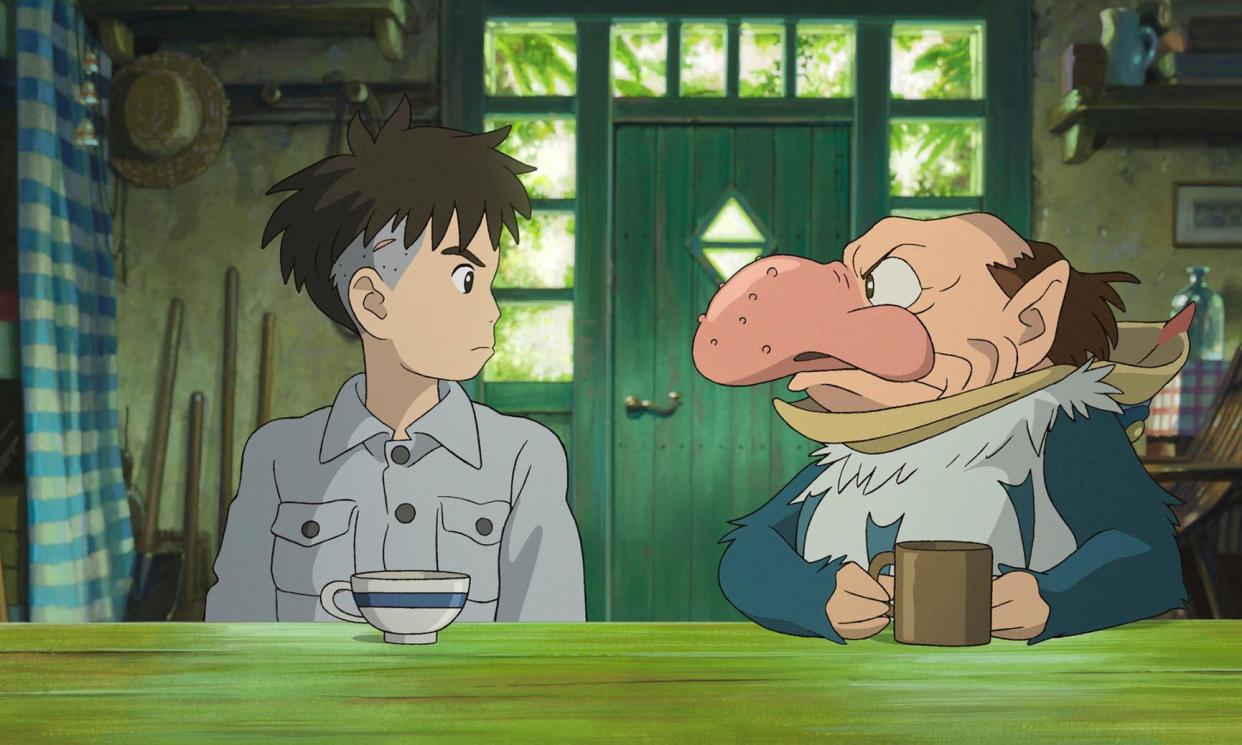The Boy and the Heron review – Miyazaki’s mysterious, magical fantasy on grief and meaning

The great Japanese animator Hayao Miyazaki recently cancelled the retirement he had announced back in 2013 and wrote and directed this new feature film. In movie terms, it’s the equivalent of Prospero super-glueing his staff back together and carrying on regardless. Does the magic still work?
Well, I found The Boy and the Heron a mysterious and charming fantasy that circles back to Miyazaki’s classic themes of childhood pain and grief and how these were forged in the fires of the second world war. It also brings home an authorial point that deserves wider discussion: Miyazaki has been influenced by classic English children’s literature. At various times, this reminds me of Lewis Carroll’s Alice’s Adventures in Wonderland and CS Lewis’s The Voyage of the Dawn Treader. The film’s original title How Do You Live? is however taken from a 1937 Japanese novel (what might now be called YA) by Genzaburō Yoshino, referenced in the film’s action, and a favourite of Miyazaki’s.
So how do you live? By coming to terms with the past; by forgetting it, or transforming it into something manageable and malleable, something that will not crush you. Mahito (voiced by Soma Santoki, Luca Padovan in the English version) is a boy whose mother was killed in 1943 during an allied air raid. His father gets married again to his late wife’s sister, and a few years later takes Mahito to live at his wife’s family’s country estate whose grounds are dominated by a huge and oddly sinister tower. He is the manager of a munitions factory, making aeroplanes (to counter the effect of the enemy aircraft that killed Mahito’s mother) whose outer shells he ends up bizarrely having to store at this property. Miyazaki’s own father was a munitions manager: does the director remember this happening in his own life?
To make things even more painful for Mahito, who can in any case hardly process what is happening, his stepmother/aunt Natsuko (Yoshino Kimura, Gemma Chan in the English language version) is pregnant. It is as if his mother’s existence in his life has been re-fabricated in a surreally wrong way and Mahito can naturally never be so disobedient or disloyal as to question his father’s decisions, or even think about them directly. Poor Mahito is then confronted by a macabre talking heron who swoops into his life. Natsuko disappears and Mahito must go on a quest to look for her in a parallel universe, the gateway to which is in this tower.
This universe is of course populated by all sorts of weird and wonderful creatures – and yes, perhaps these figures will be a little over-familiar to Miyazaki followers. But it is only when the story is all over, and it is allowed to settle in your mind, that its potency is revealed. In a way, the huge surreal panoply is a symptom of Mahito’s emotional overload, something that he has perhaps imagined, although this kind of rational explanation is inimical to the film’s spirit. The Boy and the Heron is a valuable new addition to this unique film-artist’s canon, about confronting a terrible sadness and finding a way to replace it with wonder and joy.
• The Boy and the Heron is released on 26 December in UK and Irish cinemas.

 Yahoo Movies
Yahoo Movies 
